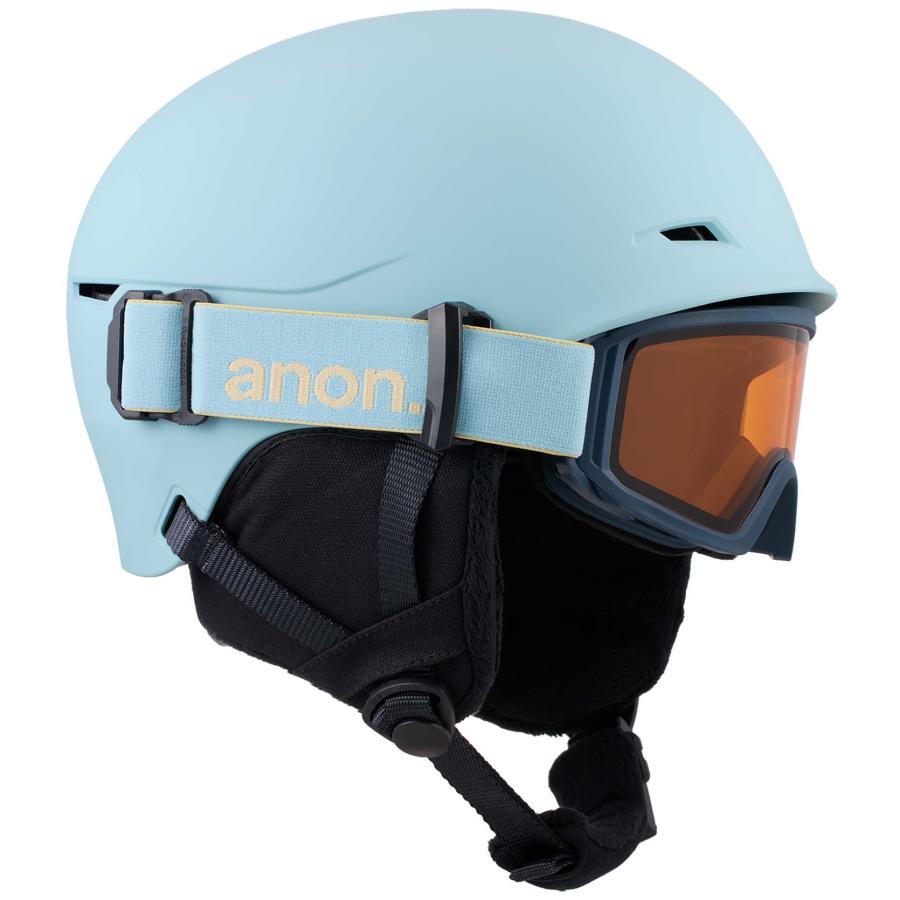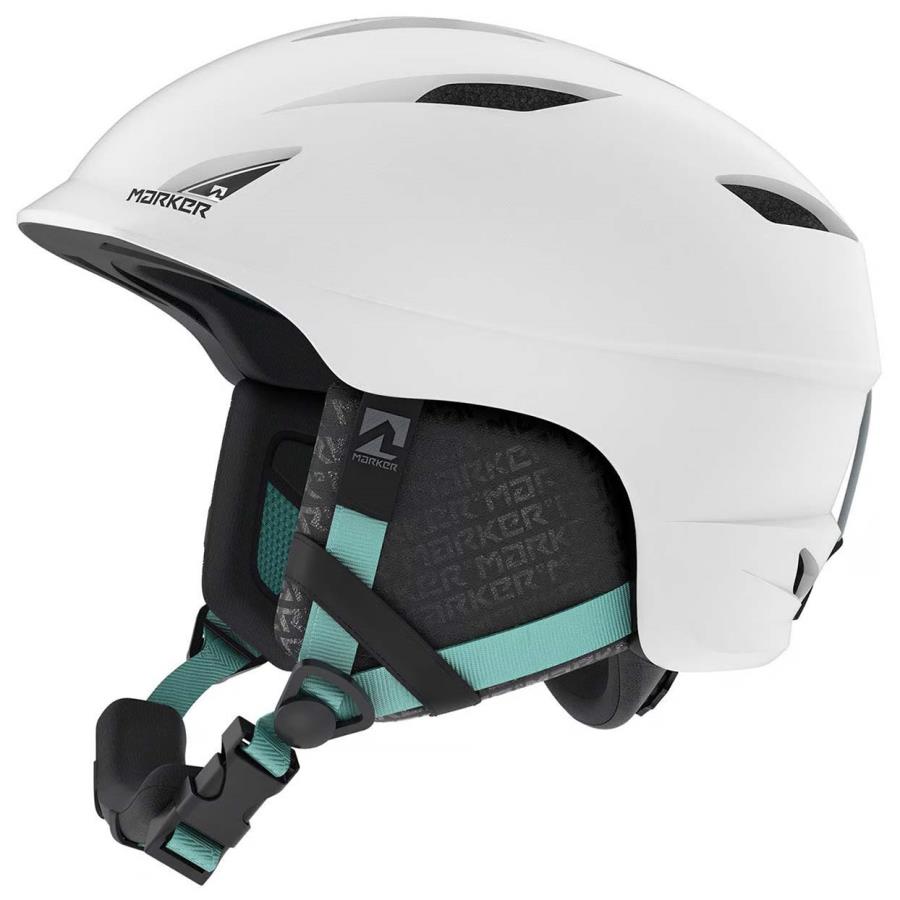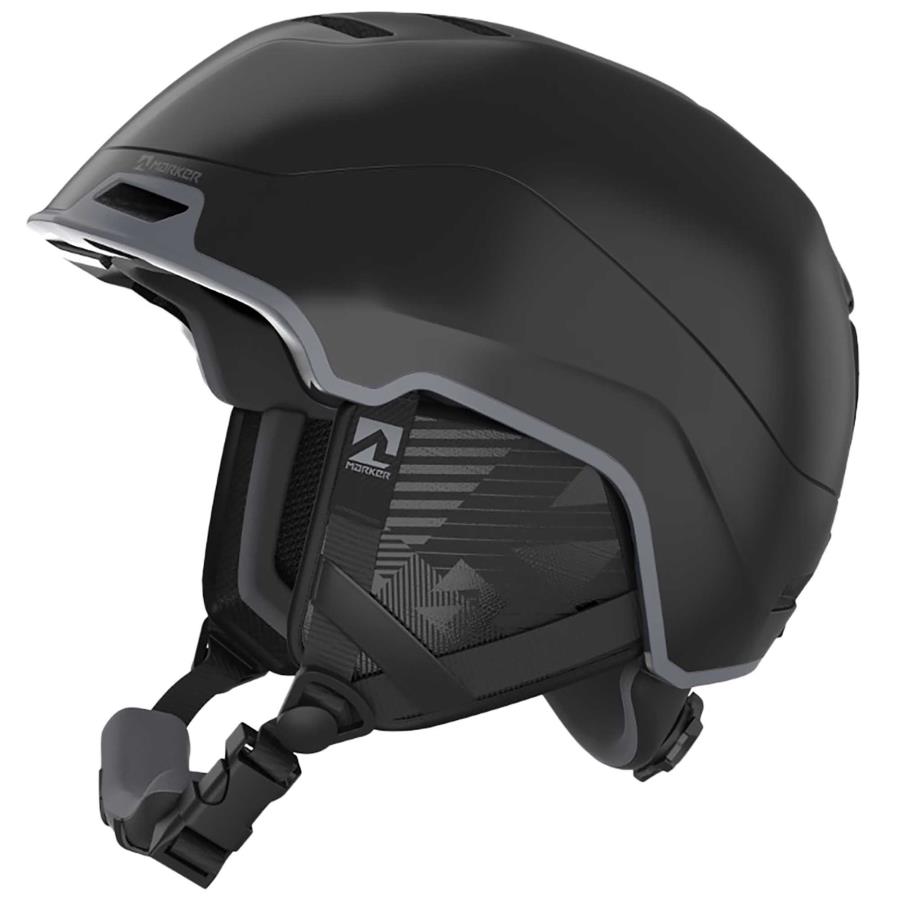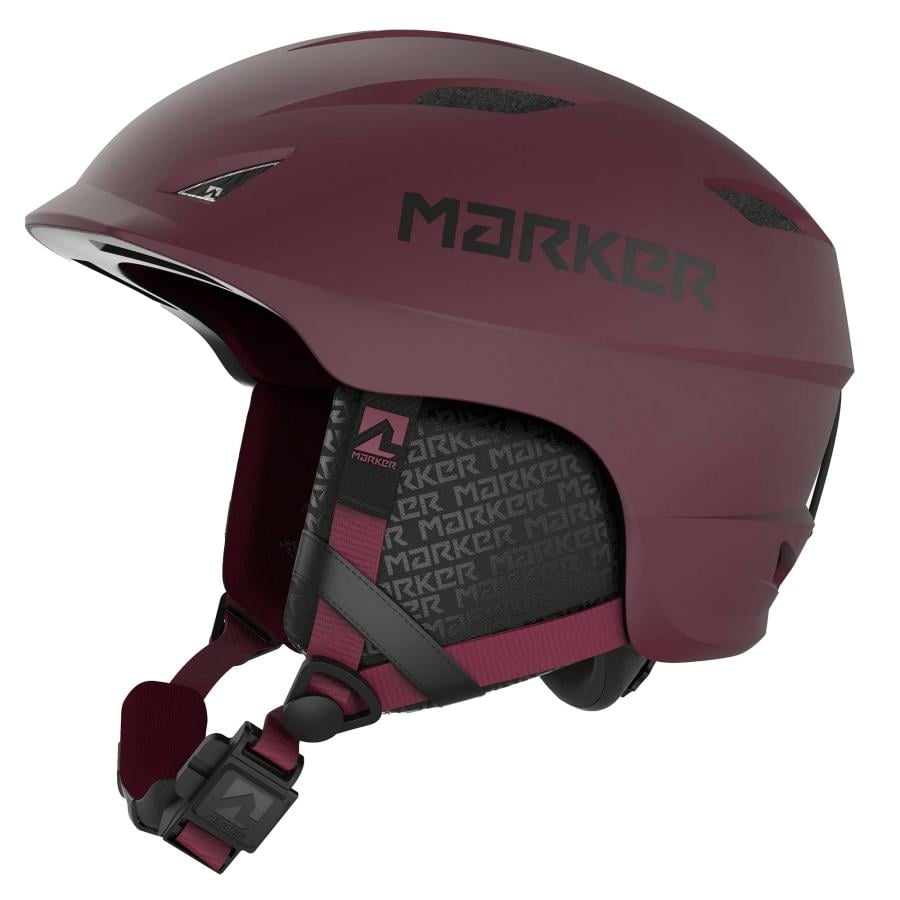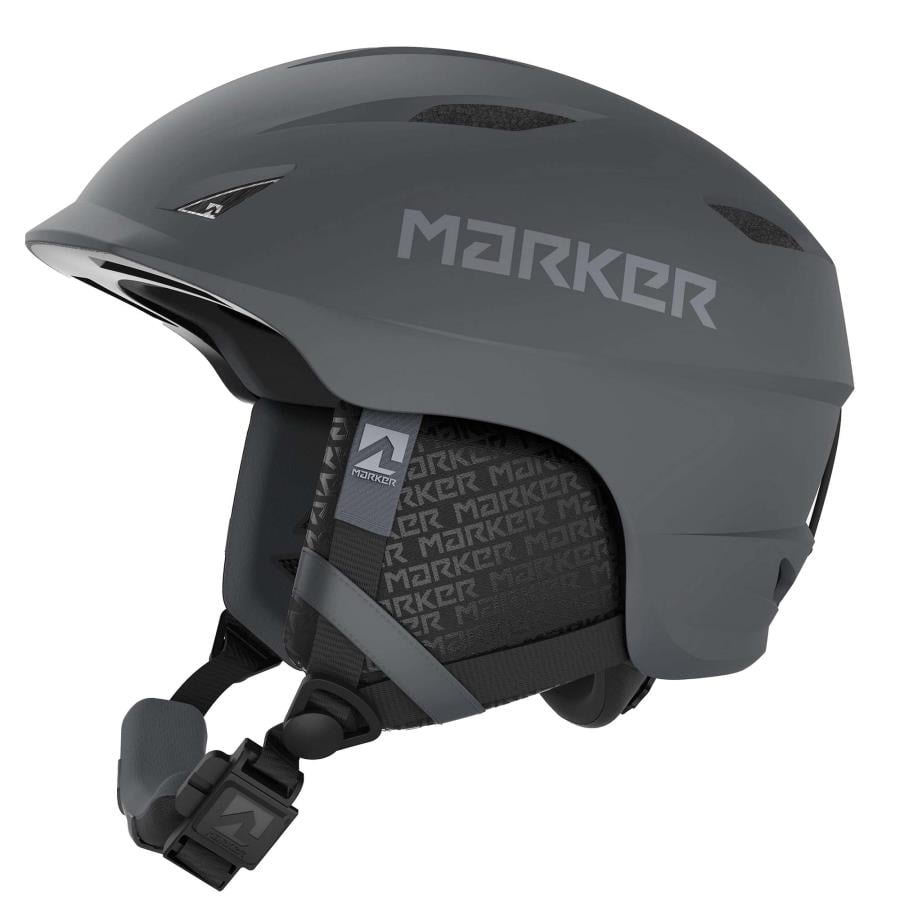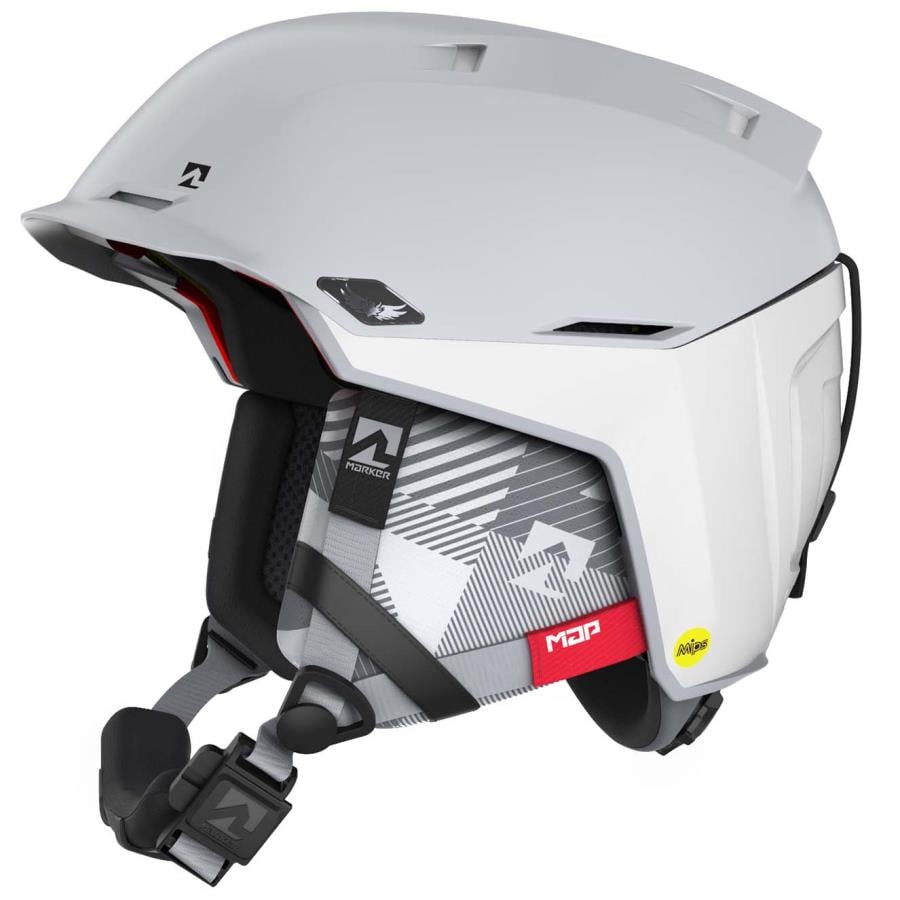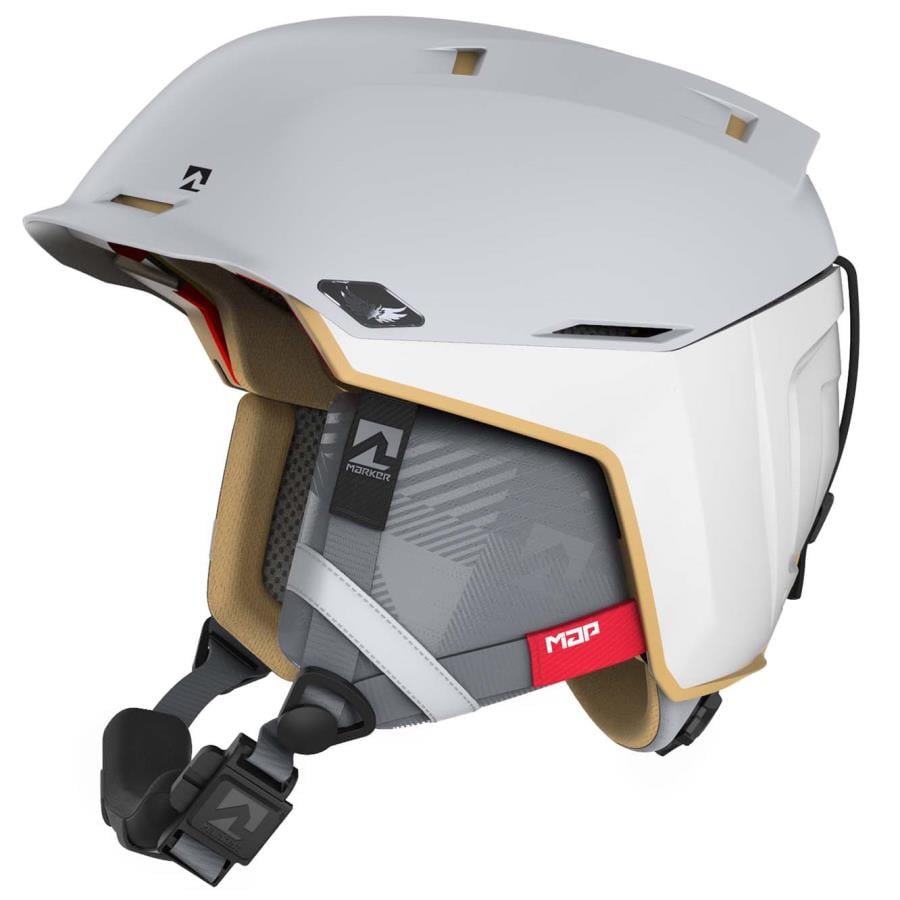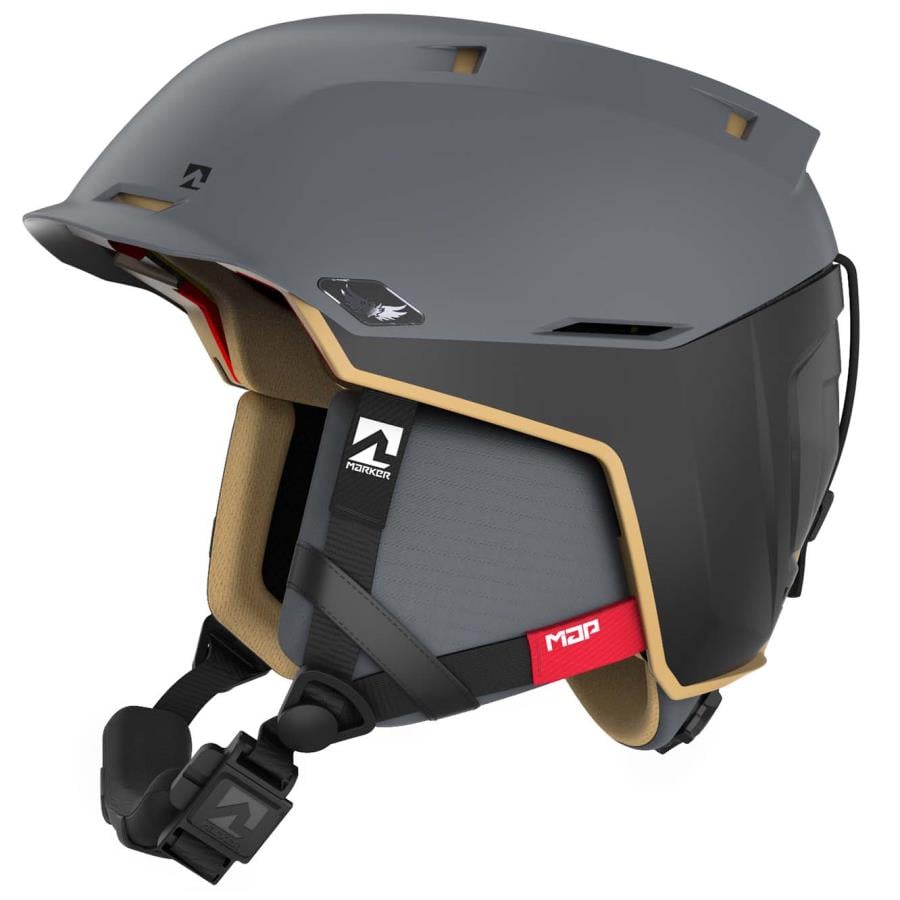The Absolute Guide to Buying a Ski or Snowboard Helmet
Should I buy My Own Ski Helmet?
Protecting yourself from injury whilst skiing or snowboarding is very important and a helmet is arguably the most important part of your ski or snowboard gear. Taking just a small impact on the head can not only put you out of action for a weeks holiday with a splitting headache, but it can also cause lasting or permanent damage!
By wearing a helmet you can protect yourself against falls and impacts, helping to boost your confidence and riding ability. The most important factor to remember if you are debating a helmet is that it might not be you that has the accident - but what about the person who comes down behind you?
Here at Absolute-Snow we understand how important a helmet is. That's why you'll never see any of our team members skiing or snowboarding without one!

Choosing the right ski or snowboard helmet is very important and there are a number of key things you should be looking for. The most important factors to take into account are a good, snug fit and the correct level of protection.
The following buying guide will give you all the information you need to get the correct fit and ensure you're buying the best helmet for your needs.
A correctly fitting helmet is incredibly important. It ensures that the helmet functions as designed and offers the best level of protection possible. Because no two helmet manufacturers make their helmets the same it is important to measure your actual head size in centimetres (a small in one brand may be a medium in another).
Follow the instructions below to ensure that you get the right size and correctly fitting helmet.
Measuring Your Head
- Measure around your head using a soft tape measure.
- Ensure the tape passes across the centre of the forehead, above the ears and over the natural bump at the back of the head.
- Allow 1cm extra for long or thick hair, or if you intend to wear a beanie or balaclava under the helmet.
- If you are at the top end of any of the sizes, we advise going for the larger size to accommodate different head shapes. If your head is exactly the same circumference as the helmet, because your head is unlikely to be the exact shape of the helmet it's unlikely to fit perfectly so a larger size will fit better.

MIPS - Multiple Impact Protection System
MIPS is a cutting edge technology built into helmets and designed to help reduce rotational motion to the head that could occur in so-called oblique impacts (neither parallel nor at right angles to a specified or implied line; slanting).
During more than 25 years of research into rotational motion and helmet safety, and an abundance of studies and data, the MIPS team found one key element kept cropping up: in the vast majority of accidents in which someone hits their head, the impact is oblique, and an oblique impact entails increased the risk of brain damage. The same thing goes for objects falling from above at, for instance, a building site: they cause an oblique impact – even if you're standing still.
If you ride, bike, or ski and fall and hit your head, you are likely to experience an oblique impact. The moment your head hits the ground at an angle, rotational motion can make the head rotate more or less, depending on the impacting object or surface. The energy from the impact can be directed further into the head, which can cause brain injury. Rotational motion is thus the result of oblique impacts to the head.
The brain is more sensitive to oblique impacts versus straight impacts. Oblique impacts are also much more common. But most helmets on the market today are only tested and approved for straight impacts, even though these kinds of accidents are far less common.
Adjusting The Fit
Ski and snowboard helmets come in two different fits - standard or adjustable.
Standard helmets come without an adjustable fit and therefore each size is designed to fit a smaller range of head sizes. For example a medium helmet may be designed to only fit a 58-59cm head size. Adjustable helmets come with systems that allow you to tailor the fit to ensure a comfortable and snug fit every time. For example a medium helmet may be designed to fit anything from 56-60cm thanks to the adjust ability of the helmet.
There are 3 main adjustment systems that can be found on ski and snowboard helmets.
These helmets come with a series of foam pads that vary in thickness. These can be swapped in the helmet to change the size and fit quickly and easily. These systems tend to be a lot cheaper and are great for people who sometimes like to ski or snowboard with a beanie under their helmet.
These helmets come with an adjustable band around the inside of the helmet. When you tighten the slider it tightens the band which makes the helmet fit more snugly.
These systems are fairly cheap and work well allowing you to quickly and easily adjust the fit of the helmet, even when out on a mountain.

These helmets come with a sophisticated dial fit system which when turned, tightens or loosens an internal 'cage' inside the helmet. This adjusts the fit ensuring a comfortable and snug fit every time.
These systems are more expensive due to their complexity however they do offer a fantastic level of fit.

Helmet Certifications
Ski and snowboard helmets are tested to ensure their safety and level of protection. There are a number of different certifications that are given to helmets and these vary between regions. North America for example sues a different classification than Europe. Below is an explanation of each classification and what they all mean.
The Consumer Product Safety Commission is a government department in the United States that regulates the sale and manufacture of consumer products to ensure their safety and function. CPSC certification is found on cycle, roller skate, scooter, BMX, mountain bike, sledding and ice skating helmets.
These helmets are tested to sustain more than one moderate impact however should be replaced if there is visible damage present. Always make sure you follow manufacturers guidelines for the replacement of your helmet. This certification is less common in Europe where we have the EN 1078 certification.
The American Society for Testing and Materials is an international standards organisation that develops and publishes technical standards for consumer products. ASTM 2040 is the specification for recreational snow sports however is tested to a lower impact level than the European CE 1077/EN 1077 specification. This certification is less common in Europe where we have the EN 1077 certification.
This is the European standard for cycle, skate and roller skate helmets and includes provisions for field of vision, shock absorbing properties, retention system and chin strap & fastening devices. This standard is seen on almost all certified cycle or skate helmets found in the UK. Construction types for these helmets are almost always EPS or In-Mold technology with ABS or PVC plastic shells.
This is the European standard for non-motorised snowsports such as recreational skiing and snowboarding and includes provisions for field of vision, shock absorbing properties, retention system and chin strap & fastening devices. This standard is seen on almost all certified recreational ski or snowboard helmets found in the UK.
EN 1077 comes in Class A or Class B. Class A helmets must protect the top, rear, ears and side of the head and must withstand an impact from a drop height of 75cm. Class B must protect the top and rear of the head and must withstand an impact from a drop height of 37.5cm. Construction types for these helmets are almost always EPS or In-Mold technology with ABS or PVC plastic shells.
The standards listed above are the most commonly found certifications in Europe. There are a number of other standards which can be found and are listed below.
Snell N-94 - US standard for non motorised sports such as skateboard and roller skate
Snell S-98 - US standard for skiing and snowboarding
Snell B-90A, B-95, B-90, B-90TT, B-95TT - US standards for different cycling based activities
EN 1080 - Similar to EN 1078 but specifically for children's cycle helmets
EN 1385 - Certification for Watersports including Canoeing and White Water sports. Most multi-impact/hard hat helmets have this certification.
More manufacturers are making uncertified versions of their helmets which are designed to sustain multiple impacts. These are often referred to as 'Hard Hats' as they cannot be classified as a helmet as they don't come with one of the standard helmet certifications listed above. This are becoming more popular with skiers and snowboarders who want a helmet designed to take more, lower force impacts than one large impact. Check out the differences between helmet constructions below to see the pros and cons of these.
Helmet Constructions
Ski and snowboard helmets are usually made from industry standard EPS foam. There are more manufacturer specific constructions coming out all the time. Check out the main construction methods below.
EPS is the industry standard for ski and snowboard helmets and is a tough, rigid foam. Its rigid shape and ability to take higher force impacts makes it the most popular construction around.
It is also very versatile meaning it can be easily shaped and have hard ABS plastic shells easily attached to them. EPS foam usually achieves CPSC, ASTM 2040, EN 1077 and EN 1078 certification however always make sure you check the individual helmet to see its exact certification.
EPS helmets are designed to take a large, single impact. This means that if you take a large impact the foam can become compromised and should be replaced, regardless of whether the helmet appears fine. EPS helmets offer some of the best protection however they do tend to be a bit bulkier as a result.
.jpg)
In-Mold helmets are becoming an increasingly popular alternative to traditional EPS helmets. In-Mold helmets are made in one of two methods.
The first it to take an EPS liner without the hard shell on the outside of it. Then instead of bolting or glueing a hard plastic shell to the outside of it, the EPS lining is 'dipped' or 'sprayed' with thinner coating of PVC plastic or a similar material. The second method is to inject a PVC or similar material shell with a Polyurethane foam. Both of these methods create a thinner, lower profile, seamless helmet which doesn't look like such a mushroom! In-Mold helmets are becoming more popular due to their lower profile and lighter design.
Because the lining is still EPS or Polyurethane foam these helmets usually achieve CPSC, ASTM 2040 and EN 1077 certification however always make sure you check the individual helmet to see its exact certification.
.jpg)
EVA (Ethylene-vinyl acetate) Foam is a soft, spongy, malleable material that offers a low profile alternative to regular bulky helmets. EVA foam is not certified and doesn't offer the same level of protection however they are multi impact and give a much lighter, lower profile look.
More helmet manufacturers are starting to produce multi-impact helmets that are made from materials often unique to that manufacturer.
The most popular of these multi-impact constructions is Bern's Brock Foam. These helmets are usually not certified however they are increasingly popular due to their multi-impact properties. Always check the helmet listing to see whether a helmet comes with a certification.
.jpg)
G-Form is an innovative Reactive Protection Technology which changes state when it takes an impact to dissipate nearly all of the energy from the impact.
In it's resting state the molecules in the material slightly repel each other which makes the material soft and flexible. When the material takes an impact the molecules instantly bind together to absorb and dissipate energy, before returning to its original state again. This means G-Form is multi impact and is incredibly durable.

Koroyd is a unique co-polymer construction of extruded tubes which are thermally welded together. These absorb and dissipate energy extremely efficiently as well as ina controlled and predictable manner. This means maximum safety with minimum weight. Koroyd is also extremely breathable making it much more comfortable than traditional helmet constructions.

Poron XRD is a lightweight, thin and breathable urethane material engineered for impact and shock absorption.
Its microcellular technology is open cell and bretahable making it incredible comfortable to wear. At rest it is soft and pliable but when it takes an impact it becomes rigid to create a protective shell. This is even more apparent at faster speeds so the harder you slam the harder it works to protect you.

Expanded Polypropylene is designed to withstand multiple lower force impacts and is lightweight and comfortable to wear.
Vinyl Nitrile is a versatile closed cell foam which has a low density, firm level of support, high durability and is weather resistant. Vinyl Nitrile is considered virtually indestructible which makes it excellent for cushioning, vibration dampening and shock absorption. It is also incredibly easy to shape meaning when laid inside a helmet it is low profile and comfortable. Vinyl Nitrile is also multi impact.
Additional Helmet Features to Look Out For
Good ventilation in a ski or snowboard helmet is very important. Helmets without adequate ventilation can get very hot and sweaty and become uncomfortable to wear. Some helmets come unvented to give a smooth and sleek look however these helmets can get hot. Other helmets come with fixed vents and some come with adjustable ventilation.
If you get warm when you ski or snowboard it is a good idea to pick a well ventilated helmet. When wearing goggles with a helmet you can sometimes find that they get warm and start to fog or mist up.
Buying a helmet that works with your goggles is therefore very important. Some manufacturers make sure that their helmets and goggles work perfectly together by creating channels that meet between the helmet and goggles to keep the air flowing.
A constant flow of air will make sure your goggles don't fog up when it's warmer. Also avoid placing your goggles on your helmet as this can cause them to fog or mist up.
Getting a helmet and goggles that work well together is very important, not only for ventilation purposes, but also for comfort. Some larger goggle frames don't work well with certain helmets as they get squashed down your face by the profile of the helmet, making them uncomfortable to wear.
Similarly, some smaller goggles don't work well with certain helmets as they leave a gap between the top of the goggles and the brim of the helmet. This gap can create a chilly draft that becomes uncomfortable. Some manufacturers ensure that their helmets and goggles work together perfectly, giving a seamless fit and integration.
If you are unsure whether a pair of goggles will work with a helmet then just drop us an email and our knowledgeable staff will do their best to help you out.
Helmets come in 4 main styles - standard, peaked, full cut and full face. Standard helmets are the most common type and cover your head and have earpads to keep your ears warm. Peaked helmets are a newer, increasingly popular style that features a solid brim, similar to a baseball cap, to help keep the sun, rain and snow out of your eyes.
Full cut helmets offer greater protection than standard helmets as their hard shell covers your ears as well as your head. Full cut helmets are popular with racers and parents of young children. Full face helmets are the same style as a motorcycle helmet. This gives the full protection of your head, face, ears and chin. These helmets are favoured by people who like to ski and snowboard fast, or who do a lot of backcountry riding.
Visor helmets feature a built in goggle visor which can be flipped up or down. These helmets are very popular with people who wear prescription glasses as well as those who prefer wearing sunglasses to goggles. By having a built in visor, you can easily switch between sunglasses for bright light, and a built in low light lens.

Check Out Our Latest Ski and Snowboard Helmets
Check out our full range of Ski and Snowboard Helmets today!
Need further advice? We're here to help!
Check out our Buying Guides for technical tips and tricks.
Visit our Help Centre to speak to our experts.

